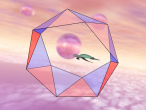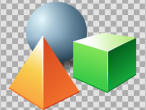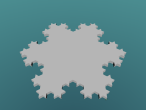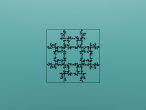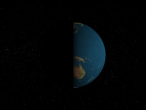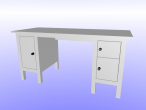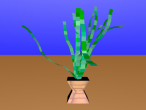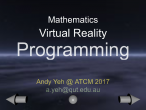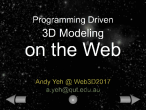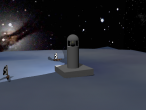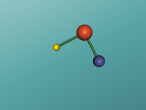About VRMath 2.0
Exploring mathematics (and STEM) in 3D virtual worlds
VRMath 2.0 utilises 3D technologies and powerful Web 2.0 ideas for teaching and learning mathematics particularly in geometry. The simple aim of this VRMath 2.0 application is to utilise affordable and innovative technologies to allow learners to freely express their ideas and make meanings of mathematics through multiple knowledge representations (signs, semiotic resources) and interpretations (semiosis). The use of technology is not merely to amplify existing ways of thinking and doing, but to provide an environment and opportunity to re-organise one's thinking and doing about mathematics.
A Brief History
At the moment, I call both this website and the online 3D application VRMath 2.0 or VRMath2. Together, they form an online learning community. The name VRMath stands for VR (Virtual Reality) and Mathematics. Its history can be traced back to 2001 when I was studying my PhD. The VRMath 1.0 application was developed using VRML (with EAI), Cortona plugin and IE's JVM. Unfortunately, those technologies did not last and were obsolete in about 2007. For more information about VRMath 1.0 please refer to the archived documents in the Archive.
It is my interest to play with VR and Web3D technologies, and my passion to research into human intelligence about spatial cognition and abilities. Therefore, I started to re-implement VRMath in 2009 with new technologies such as Web3D, X3DOM, HTML5, Javascript and mobile sensors etc., which hopefully will sustain longer. For more details about the technologies used, please visit the Links page. The 2.0 in VRMath 2.0 implies that it is the Web 2.0 paradigm, in which user generated contents will be the meaning-making artefacts, and the meaning-making will occur in the social process of design, create and share.
The idea of "meaning-making" is profound yet can be simple. The profoundness of meaning-making refers to my epistemological ground on semiotics, which was rooted in Peirce's Theory of Signs. If you prefer a simpler explanation, you can just question "how do we get to know about things?". And then you know that we learnt about things from all sorts of different signs within perhaps a few systems of signs. For example, for people who never heard about a "square", they can learn about it by seeing a square, reading about its properties, or walking a square. They may also learn about square from counting the floor size, calculating area, or doing arithmetic such as ^2. Others may also learn about square in a party when "I brought pizzas, you brought cokes, let's call it square". A simple truth is that a sign can exhibit more than one meaning. Therefore, learning requires careful choices of signs. For mathematical meaning-making, VRMath2 will do a good job in its systems of signs.
The Virtual Reality technology was chosen to facilitate mathematical meaning-making. As it turned out, the VR technology does not favour only mathematics. In June 2013, I came to realise after I wrote the first blog about a table in VRMath2, that the VR technology and the project based approach could in fact facilitate learning in many areas. For the purpose of my interest and research, I then chose to focus on Science, Technology, Engineering and Mathematics (STEM). However, all members are welcome to focus on other disciplines such as language and the arts in VRMath2 if they find fit.
Join VRMath 2.0 Community
The VRMath 2.0 community is an education community. We welcome everyone to participate for educational purpose. We do not accept spam and/or advertising activities, and hacking and/or illegal activities are absolutely prohibited. VRMath 2.0 aims to begin with the focus on the teaching and learning of geometry. However, overtime its applications will extend to include mathematics, arts, science, technology and engineering. To join this community, please register yourself with a valid email address from the registration page.
In order to use VRMath2 in your browser, you will need to meet the system requirements. The Interaction page introduces basic navigation in the VR 3D space. The Wiki is also a place to learn about VRMath2. If any questions, you can also post in the discussion forums and/or send an inquiry in the contact us page.
Acknowledgements
The design of VRMath 2.0 is an example of how we learn in this digital age. Without the Internet and its users, it would not be possible for me to design and program this application. I have learned and borrowed knowledge from numerous people from many online communities. Of them, I would like to particularly acknowledge and thank the following communities and programmers.
- X3DOM Community, particularly Yvonne Jung.
- Joshua Bell and his Javascript Logo Interpreter.
- The Drupal community.
A special thank to the School of Curriculum at Queensland University of Technology for hosting VRMath2 from March 2010 - February 2014.
- 15541 reads


